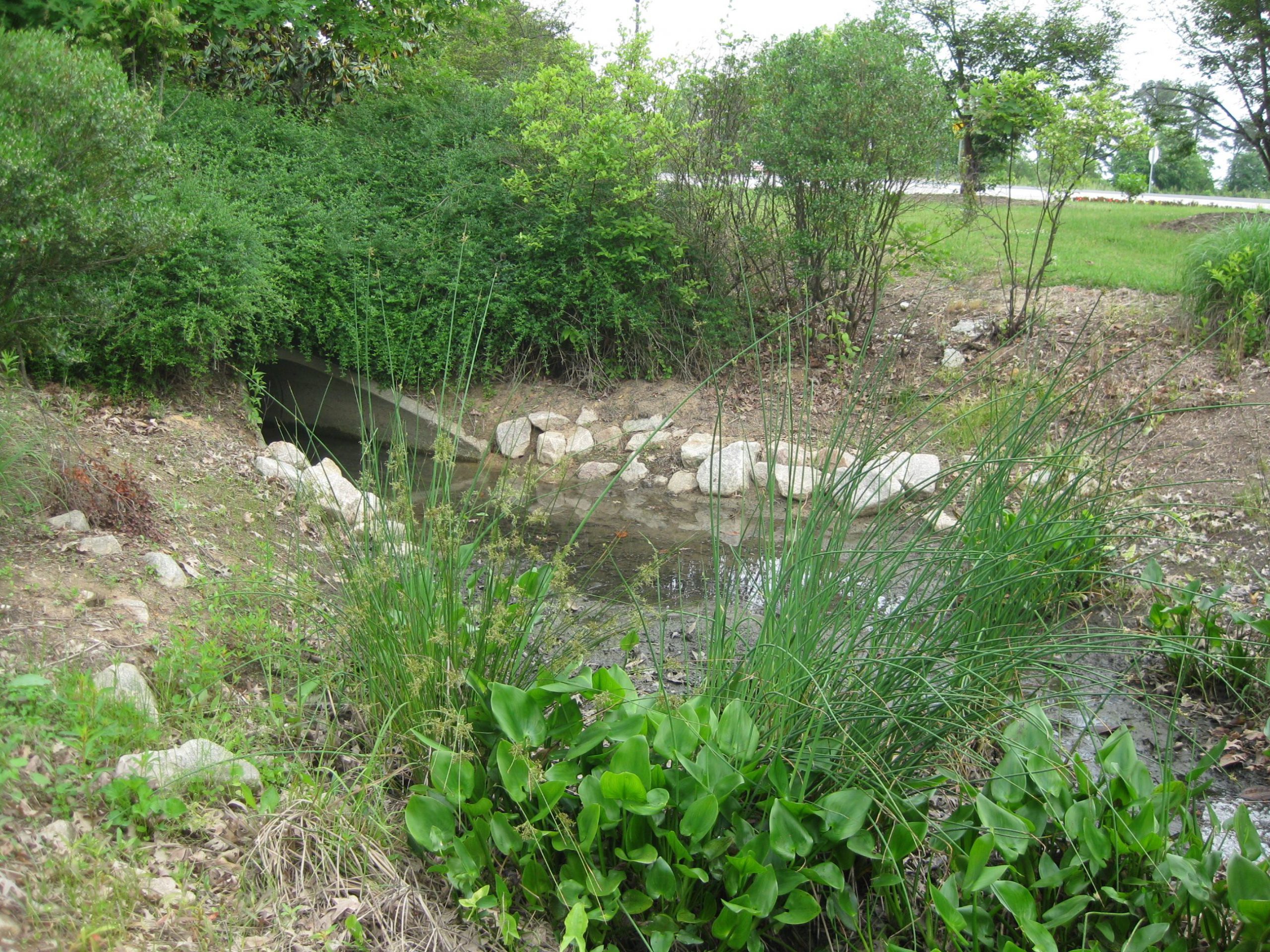Stormwater Vegetation: The Good, the Bad, and the Ugly.
by Anna Espenhahn, Marketing Coordinator
There are many complexities tied with stormwater vegetation management that may lead to confusion. From nuisance weeds to vegetation used to promote hydrology and pollutant removal, where do stormwater professionals draw the line? There have been countless articles released in the recent decade highlighting the benefits of having plant life in stormwater systems. However, proper maintenance often involves the removal of vegetation. The short answer is that it depends and typically relates to the stormwater system’s initial design and plans.
Implementing stormwater solutions that involve planting beneficial vegetation has become a popular stormwater management strategy. Low-Impact Designs (LIDs) are designed to utilize plants’ water retention abilities and other porous surfaces by mimicking the site’s natural hydrology. Examples of LIDs include rain gardens, green roofs, and bioswales. These systems utilize plants’ ability to absorb water through their roots, holding liquid in the canopy and slowly releasing it through evapotranspiration. A study published in the Journal of Environmental Quality estimated that 46 to 72% of bioswale water output was released through its vegetation [1]. Trees and other plants have been shown to help above ground by acting as a natural net to catch trash, sediment, and debris, reducing the amount of pollutants reaching local waters [2]. Underground root systems stabilize soil, reducing erosion and acting as a filter to remove chemical pollutants from the water [2]. These systems are designed with plants in mind, generally establishing littoral shelves of beneficial native vegetation.
If plant life is so beneficial, when and why should vegetation ever be removed?
There must be a synergy between the vegetation and the overall stormwater system. Systems not intended to utilize vegetation lacks the littoral shelves generally used to accommodate for the plants. If the stormwater system was not originally intended or designed to harbor vegetation, especially large or woody vegetation, the stormwater system can not function as designed. Intruding roots are known to invade stormwater structures, such as inlets and outlets, clogging, cracking, and causing other concerns that could compromise the system, leading to expensive and avoidable repairs. Nuisance and invasive plants may invade stormwater systems if there is no management plan in place, leading to adverse effects on the environment and the stormwater system. Overgrown vegetation can even inhibit inspection site lines and eliminate the aesthetic appeal of certain stormwater assets.
Additionally, regulators may explicitly require exotic vegetation to be removed from stormwater assets to remain within compliance. All that said, if unplanned vegetation that is native and beneficial, like Rush Grass in the southeast, chooses to establish itself within a system, stormwater management professionals will generally leave it if it is not inhibiting performance. It is essential to understand the intricacies of stormwater vegetation when maintaining stormwater systems, and a professional stormwater management provider can make that distinction. If you are concerned your system might require rehabilitation due to overgrown vegetation, contact AQUALIS for a free consultation.
References
[1] J. M. B. M. Bryant Scharenbroch, “Tree Species Suitability to Bioswales and Impact on the Urban Water Budget,” Journal of Envrionmental Quality , vol. 45, no. 1, 2016.
[2] “Trees and Stormwater Runoff,” Center for Watershed Protection, [Online]. Available: https://www.cwp.org/reducing-stormwater-runoff/.
 Kenosha, Wis. Highway KR Regenerative Stormwater ConveyanceThe Root-Pike Watershed Initiative Network Kenosha County, and others worked with AQUALIS to design and implement an innovative solution for stormwater control along Highway KR.
Kenosha, Wis. Highway KR Regenerative Stormwater ConveyanceThe Root-Pike Watershed Initiative Network Kenosha County, and others worked with AQUALIS to design and implement an innovative solution for stormwater control along Highway KR. Durham, N.C. Sinkhole Leads to Stormwater System RehabilitationThe tenant on this property noticed a depression that opened to the ground below and notified the property owners.
Durham, N.C. Sinkhole Leads to Stormwater System RehabilitationThe tenant on this property noticed a depression that opened to the ground below and notified the property owners.

